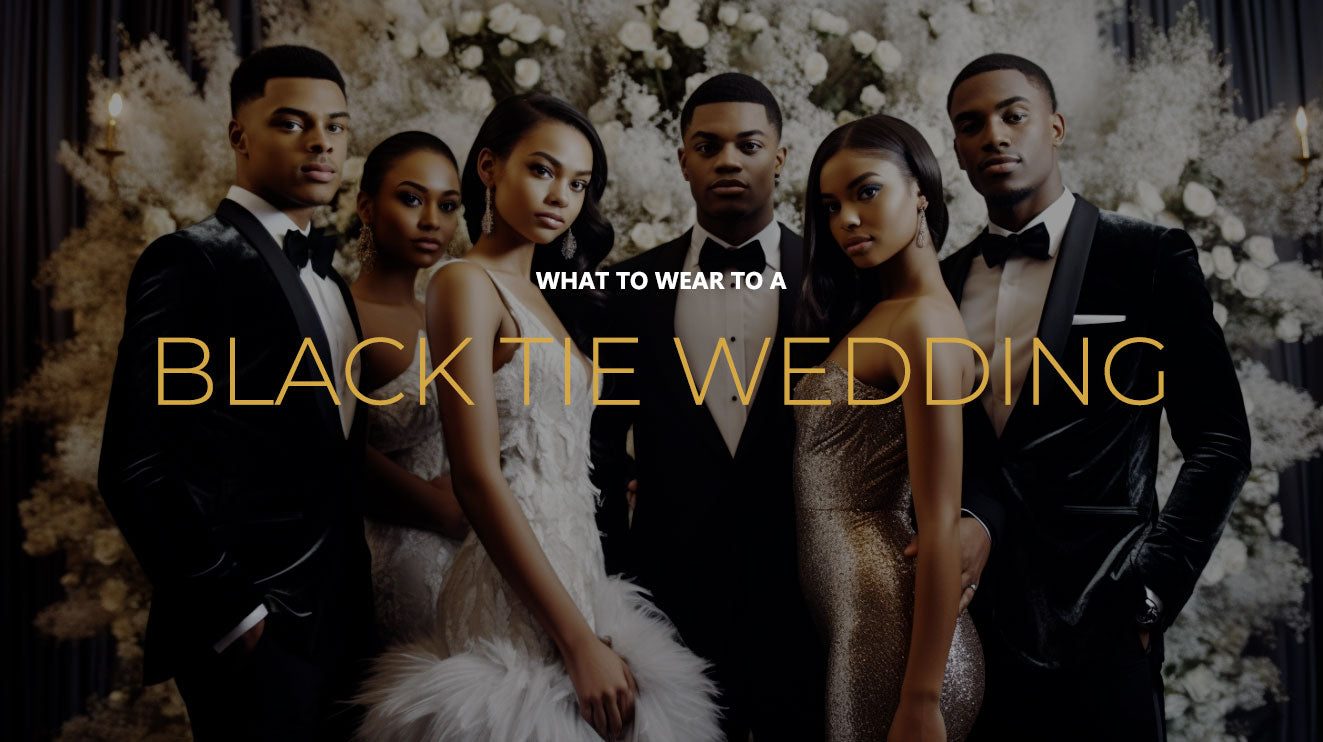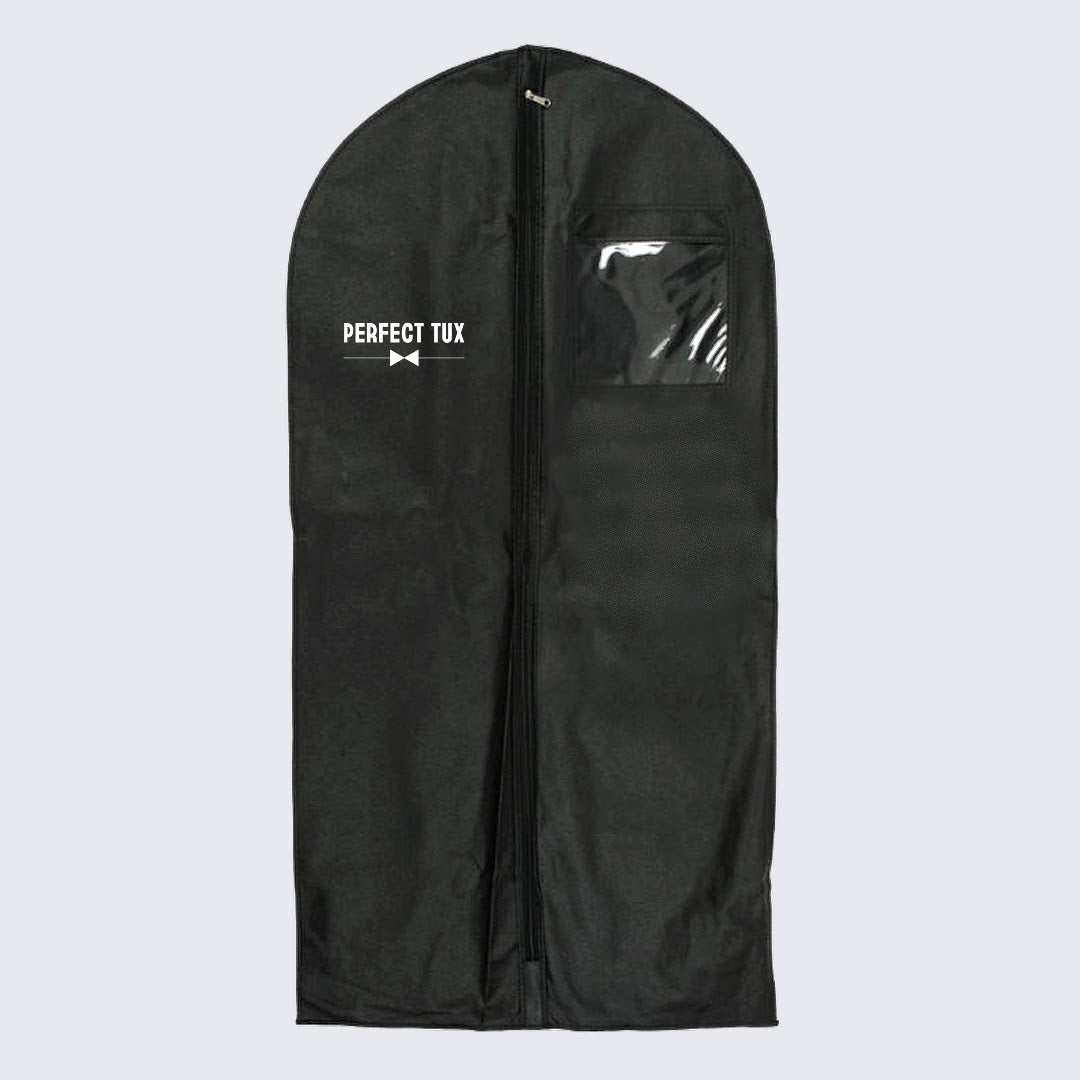What to Wear to a Black-Tie Wedding for Men In 2026

Heading to a wedding with a black-tie dress code in 2026? This guide breaks down exactly what men should wear—from the tuxedo and shirt to bow tie, shoes, studs, and smart modern twists—so you respect tradition and still look current. Whether you’re a first-timer or a frequent guest, use these tips to show up camera-ready and on code.
- Black-tie = tuxedo (not a suit): satin lapels, covered buttons, formal shirt, bow tie.
- Keep it classic (black tux, white shirt, black bow tie) and add subtle texture (velvet, grosgrain) if desired.
- Fit wins photos: correct shoulder fit; hem trousers clean; show ~¼–½″ of shirt cuff.
- Shoes matter: black patent oxfords or sleek loafers; keep them polished.
- Own vs. rent: buying can rival rental costs—and you’ll tailor it perfectly and re-wear it.
Black-tie attire has a rich history that symbolizes elegance and sophistication. With roots in the 19th century, it remains a timeless emblem of polish. Today’s best looks honor the code while allowing tasteful individuality—think refined textures and impeccable tailoring, not flashy colors.

The Essence of Black Tie
Black tie is a formal evening dress code centered on the tuxedo. The core components are a black dinner jacket with satin lapels, matching tuxedo trousers, a white tuxedo shirt, a black bow tie, and formal black shoes. Accessories (studs, cufflinks, pocket square) add refinement without distracting from the clean silhouette.
Black-Tie Attire: Striking the Perfect Balance
Understanding the distinction between a tuxedo and a suit is essential. A tux’s satin details elevate the formality beyond a standard suit. Use the pieces below to keep your look classic—then layer subtle, modern swagger.
Tuxedo Jacket
Classic single-breasted jackets with shawl or peak lapels are safest. For a modern twist, consider a tasteful black velvet dinner jacket or a double-breasted cut—both read luxurious yet appropriate when styled in black. Avoid bold colors at strict black-tie weddings.
Trousers
Tuxedo trousers traditionally feature a satin side stripe. Contemporary sets may omit the stripe for a minimal look. Either way, choose a tailored, clean hem (classic slight break) and ensure the seat and waist are neatly adjusted.

Tuxedo Shirt
White is mandatory. Pleated bibs are ultra-formal; a plain (non-pleated) front in microfiber or piqué is a modern, sleek alternative. Use studs and cufflinks for a proper finish.
Bow Tie
Choose a black bow tie in silk satin or grosgrain. An oversized or velvet bow can add subtle personality while staying within code. Pre-tied is acceptable, but a hand-tied bow looks best and photographs beautifully.

Tuxedo Shoes
Classic black patent oxfords are the standard. Sleek, non-lace loafers are an elegant modern option—just ensure they’re formal and polished. Dark, ultra-clean calf leather can work when patent isn’t available.
Pocket Square
A crisp white linen or silk square complements black tie. Keep the fold simple (TV fold or gentle puff) and let the jacket lapels lead.
Cufflinks & Studs
These are the jewelry of black tie. Onyx, mother-of-pearl, or understated metal sets add quiet luxury. Confirm your shirt accepts studs and cufflinks (French cuffs or convertible cuffs).
Vest or Cummerbund
Both are correct. A low-cut U-shape waistcoat (vest) feels modern; a classic satin cummerbund remains elegant. Choose solid black satin for a cohesive look.
Renting vs. Buying: The Perfect Fit & Beyond
Renting can be convenient, but buying from Perfect Tux often equals the cost of a few rentals—and delivers a sharper, tailored fit you’ll re-wear for future events. You’ll also access exclusive styles you won’t find in rental programs.
- Better fit & fabric: Own it, tailor it, and choose materials that photograph beautifully.
- Exclusive designs: Fashion-forward dinner jackets and refined classics you can’t rent.
- Long-term value: Re-wear for galas, black-tie weddings, and formal celebrations.

Black-Tie Optional: Raising the Formal Bar
If the invite reads “black-tie optional,” a tuxedo is still the most elegant choice. A well-tailored dark suit can work in a pinch, but keep accessories classic (white shirt, black tie, black shoes) and skip loud colors. When in doubt, dress up.
Want a deeper primer on black-tie rules? See this concise overview from The Knot.
Conclusion: Elevate the Room
Black tie isn’t restrictive—it’s a blueprint for looking your absolute best. Keep the core classic, tailor the fit, and add subtle texture for modern polish. Explore our curated selections to build your look:
Black Tuxedos • Tuxedo Shirts • Bow Ties • Cufflinks & Studs
Visit Perfect Tux in Santa Clarita
Come experience our showroom in person at Perfect Tux — your local destination for men’s suits, tuxedos, and formalwear.
FAQ
Can I wear a suit to a black-tie wedding?
Strict black-tie calls for a tuxedo. If the invite says “black-tie optional,” a dark, impeccably tailored suit can work—keep accessories classic.
Do I have to wear a black bow tie?
Yes for traditional black-tie. You may vary texture (satin, grosgrain, velvet) or size slightly, but stick with black.
Are velvet dinner jackets acceptable?
Yes—if they’re black and styled classically. Velvet adds refined texture while staying within the code.
What shoes are best for black-tie?
Black patent oxfords are standard. Sleek black formal loafers are a modern alternative; ensure a high-shine finish.
How far in advance should I buy my tux?
Ideally 4–8 weeks before the event to allow time for alterations (hemming, sleeve length, waist adjustments).

